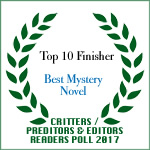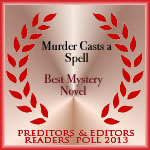You may have noticed that I haven’t posted to my blog in sometime. There are two reasons for my absence. First, I’ve been very busy working on my eighth novel set in Harlem, New York. Secondly, WordPress changed its format while I was gone. Now I’m back. However, I am still in the process of learning the new WordPress. It will take some practice before I gain mastery. Please be patient. So, this is my first try. Wish me luck.
I’m Back
Research Dividends
As authors, we all engage in research in an effort to ensure authenticity in our writing. That is a given. However, I’ve found that research provides dividends beyond my search goals. These dividends contribute to my love of research.
Here are a couple of examples of research dividends I stumbled on while seeking information for my new novel set in Harlem, New York.
- I needed to find out which area of Harlem was considered the most dangerous. I discovered it was East Harlem. I garnered two unexpected dividends in my search: 1. The actual most dangerous corner. 2. There’s a MacDonald’s fast food restaurant on that corner. Of course I worked these two dividends into my story.
- For my novel, “Murder Down Under,” set in Australia I needed to add info about dangerous in the Outback. Two unexpected dividends resulted from this search: 1. The most dangerous snakes in Australia are the the Mulga, Gwarder, Northern Death Adder and the Brown Snake. Dividend 2. You can purchase snake venom from these snakes on snake farms in China.
These are just two examples of research dividends I’ve encountered while writing my novels. Fascinating!
More tips:
3 Research Methods for Novelists
8 Internet Resources for Mystery
Posted in research, Research for novels, Uncategorized, Writing strategies | Tags: books, Google+, Internet, research dividends, safari, technology
How to Beat Writers’ Block
Writers’ Block can affect any author at any time. It can be of short or long term duration. It can happen at the start or in the middle of writing a new novel. Since most of us as authors are likely to experience it, the question is what to do about it. I know from personal experience that just wringing your hands won’t work. Each writer has her own strategy for dealing with this paralyzing problem. I will share mine and I invite you to share yours.
- Keep writing. Continue writing something. Either your novel, a blog, social media comments, emails anything that keeps you at your computer for some part of your day. I usually focus on my novel.
- I stick to writing my novel. I write anything related to my story—setting, dialogue, narration—it doesn’t matter because I will revise and even delete what I’ve written. My objective is to write.
- I find writing dialogue between characters to be a very useful tool for getting me back on track. Dialogue is easy for me to write and often I can use it as a story skeleton that I plump out with more details later.
- Another strategy that works for me is to conduct research on an element of my novel. In my research I always learn something new that I can use to broaden my story.
- When I have writers’ block I forget about sequence. I may write a final chapter or I may create a scene that belongs in the middle of my story just because I like it. I can always reposition it.
- Finally, I think about my plot when I’m on a walk or just before I go to sleep. I sometimes act out a scene in my mind. This is also writing. It’s just done without a pen or computer.
I repeat, the best way to break through writers’ block is to write. I’d love to hear your strategies for beating writers’ block.
More Tips:
How to Conquer Writers’ Block
Art as Inspiration for Setting
As I explained in my last post, I often use paintings or photos as inspiration for my story settings. Here is a painting of the famous Golden Gate Bridge by my brother that I used as inspiration for my novel, “Murder Lurks in the Fog,” set in San Francisco.

The Arts as Inspiration for Story Settings
The Arts can often provide inspiration for story settings. I’ve developed descriptive ideas for many of my story settings from several different types of art. I’ve gotten inspiration from photographs, music, poetry, dance and paintings. Scenes in my novel, “Murder Down Under,” are set on a sheep station in Northern Territory of Australia.
Here is an example of a painting that helped me describe the vastness of the Australian Outback. My brother, Billy West, created this water color that portrays the emptiness and loneliness of some parts of this beautiful area of Australia. The painting is not just a landscape, it is also an “emotional feeling.”
New Novel: Murder on the Emerald Isle
Commas Make Me Crazy
 As a mystery writer, one of my major frustrations relates to commas. Commas make me crazy. Apparently I’m not the only one who suffers from this problem.
As a mystery writer, one of my major frustrations relates to commas. Commas make me crazy. Apparently I’m not the only one who suffers from this problem.
To quote Oscar Wilde venting his frustration with commas:“I spent all morning taking out a comma and all afternoon putting it back.”
I share his pain—To comma or not to comma, that is the question. In an effort to find the answer, I researched rules for using commas. I found sets containing from 4 to 13 rules. I decided to select the rules I considered to be most useful to me as a writer. Here they are:
Use a comma
- before a coordinating conjunction (and,but,for,or,nor,so) that links two independent clauses.
Example: The light turned red, so he crossed the street.
- after an introductory clause or phrase that starts a sentence.
Example: When Mary got permission to go, she raced to the door.
- to offset appositives.
Example: John, lead singer, stepped to the mic.
- to separate items or phrases in a series.
Example: We bought robes, socks, slippers, and pajamas.
Mary promised to clean her room, take out the garbage, and feed the dog.
- to enclose clauses not essential to the meaning of the sentence.
Example: Jerry, who tends to pout, will be at the party.
- to indicate direct address
Example: “You got that right,” Homer.
- to set off direct quotations.
Example: “I like funny movies,” Sally said, “because they make me laugh.”
Yes, there are other comma rules such as those used in dates, addresses, titles and numbers, but these are pretty obvious. Most of us learned about them in primary grades. My list of comma rules are the ones I use the most, and at the same time, the ones that make me crazy.
More Tips:
Writing Craft Rules: Never Say Never
5 Elements of Writing Craft
7 Ways to Make Your Writing Clear and Concise
6 Most Misused Punctuation Marks In Fiction Writing
Banshees: Malevolent or Benevolent?
Banshees: Malevolent or Benevolent? The answer is both. We are well-acquainted with the legend of the bad banshee—the ugly one that is a harbinger of death. We are not so well acquainted with the good banshee. The good banshee is what this post is about.
In order to understand the banshee legend, we need to delve into its origins in the land of the Irish. The word banshee comes from the Irish bean si (pronounced ban-shee) which means woman of the fairy mounds. She is an Irish female spirit.
The origin of the banshee legend can be traced back to the 8thcentury and has its roots in the females who were paid to keen or cry at funerals. These women were paid with alcoholic beverages and many became worn-out drunks and were banned from villages. It is said they lived in wooded areas and wailed their hatred of the humans who had driven them from their homes. They were punshed for their sins by being doomed to become banshees.
Banshees are often depicted as ugly old crones with frightened red eyes and long straggly hair. They dress in gray, green or white robes. When they wail, they are predicting a death.
Banshees are not dangerous. They do not kill, they only warn of a pending death. Malevolent banshees relish the deaths of people who have harmed them in some way.
Benevolent banshees are different from the evil ones in many ways. Benevolent banshees are beautiful young women with lovely, long golden hair. They wear snow white shrouds. They come from families in which they were cherished and loved. Often death took them at a young age. Like the malevolent banshee, they wail in the night but unlike their evil counterpart they wail to express sorrow at the pending death of a family member. They even try to warn or protect their loved one from danger.
Not much is written about the benevolent banshee, but they do exist in Irish legend.Read more about banshees in my upcoming novel, “Murder on the Emerald Isle.”
More tips:
Taste a Bit of Ireland in San Francisco Johnny Foley’s Irish House
Posted in Global Mysteries, Ireland, Irish legends, Irish spirits, San Francisco, Travel | Tags: banshees, death, fairies, Ireland, Irish legends, leprechauns, Waterford
What is a Beta Reader?
As authors we know that preparing a novel for publication involves more than the tremendous effort of getting ideas on paper. It involves many hours of rewriting based on editing. We edit our book ourselves. We join critique groups and present chapters for members to edit. Some of us hire copy, line and/or developmental editors. These strategies enable us to polish our stories. There is another important strategy for perfecting our novels and that is the beta reader.
A beta reader is a person who reads a completed novel before it is published, and shares his or her reaction to it from the standpoint of someone who might purchase your book. Sometimes the beta reader is a friend or relative. Typically their only payment is reading your novel free of charge.
The beta reader will evaluate your story from the standpoint of enjoyment, emotional impact, and general readability. Sometimes they will edit errors they find, but their main task is to help you identify problems with readability. They can help determine the saleability of a manuscript.
A good beta reader will improve your novel by simply noting her reaction to specific sections of the novel—hilarious, slow, heartrending, suspenseful, not realistic. She can tell you what they liked or disliked about the characters and whether they were believable.
In selecting your beta readers, try to find people who can give an objective and unbiased opinion. Consider readers from diverse backgrounds, genders and occupations.
Beta readers represent the people to whom you hope to market your novel—your reading public. As such, their kind of input is essential.
More Tips:
Strategies for Rewriting Your Novel
How do Developmental Editing and Line Editing Differ?
Revising and Rewriting a Novel is no Mystery


















